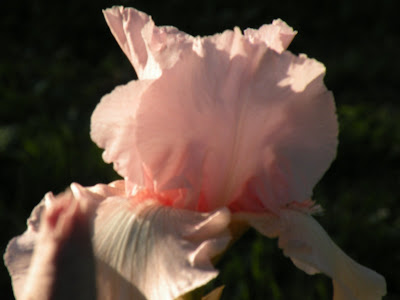Arkansas “Don't Do Fescue" is theme of AGFC public campaign
JONESBORO - Tall fescue is a widely used forage crop. It is insect resistant, tolerates poor soil and climatic conditions well and has a long growing season. Unfortunately, tall fescue also has a downside.
With approximately four million acres of pasturelands planted in tall fescue, Arkansas has a great deal of this crop. According to David Long, agricultural liaison with the Arkansas Game and Fish Commission, the agency is working diligently to help the public understand the shortcomings of this type of grass.
"The AGFC has developed a new tool in its effort to educate landowners about the toxic and negative effects of Kentucky 31 Tall Fescue to farm wildlife. A new bumper sticker entitled 'Don't Do Fescue' is now being distributed to agency employees and others interested in spreading the word," Long said. Tall fescue is a common forage grass that has been planted across Arkansas for over 40 years.
Estimates are that about 70 percent-95 percent or 4 million acres of the pasturelands planted with tall fescue in Arkansas are infected with an endophyte fungus. The fungus causes declines in bobwhite quail, cottontail rabbits, grassland songbirds and also limited other game populations such as white-tailed deer and wild turkey.
"The fact that the plant is actually toxic to both domestic livestock and farm wildlife species is accepted by agriculture extension specialists and wildlife biologists alike," Long said. "The plant produces chemicals causing the fescue to have very toxic qualities. The alkaloids are found throughout the plant, but are especially concentrated in the seeds and leaves," he explained.
In cattle, the fungus causes excessive body temperatures, elevated respiratory rates, loss of appetite, body weight loss, lowered fertility rates and abortion of fetuses. Dairy cows often show sharp declines in milk production. Horses are affected also with more aborted fetuses, foaling problems, weak foals and reduced or no milk production. The CES estimates that this endopytic toxin cost American beef producers up to $1 billion a year in lost profits.
"It's very important for private landowners who desire viable wildlife populations on their property to know the effects of planting fescue," Long noted. "Many species of wildlife would directly suffer these same negative effects if they were confined to the pasturelands as are livestock. However, since they are free ranging, they simply avoid the fungus infected fescue pastures, but nevertheless, this results in loss of farm wildlife habitat on these acres. You may have deer and turkey travel through tall-fescue pastures, but they rarely find food sources available they can utilize, since the aggressiveness of the fescue usually results in solid stands of the plant," Long concluded.
The grass is a sod-forming turf with thick matted growth that also limits movement of young bobwhite quail, turkey and cottontail rabbits, provides no nesting habitat for wild turkey or quail, and is extremely poor habitat for many declining grassland species of songbirds. "Bottom line, fungus infected tall-fescue pastures offer little food, cover or nesting habitat to a broad range of farm wildlife," he said.
"Tall fescue has been planted in an estimated 4 million acres of the 5.4 million acres of pasture scattered over the state and for all practical purposes is of no value to farm wildlife. With the widespread establishment of tall fescue pastures, a great loss of wildlife habitat for deer, turkey, quail, cottontails and grassland songbirds has occurred.
Many landowners now recognize this problem and are interested in eliminating tall-fescue on some or all of their acreage. However, many landowners continue to plant tall-fescue, not knowing the detrimental effects it will have to wildlife. (There is an endophyte-free variety of tall fescue available for planting but it is less viable and hardy, and still provides very limited habitat for wildlife.)
We want to educate all landowners regarding this fact because there are other planting options to providing livestock forage and wildlife habitat on their farms," Long explained.
Please help spread the word to landowners "Don't Do Fescue!" by requesting a bumper sticker to place on your vehicle. Especially if they have an interest in managing for wildlife on their farm. For more information contact David Long at 877-972-5438 or dlong@agfc.state.ar.us.



























